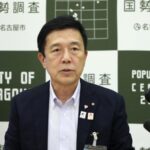At dawn in Xuchang Village, Guyang Town, Lankao County, Henan Province, wood shavings fly as melodious sounds of musical instruments fill the air. Guitars, pipas, and other instruments made of paulownia wood are sold domestically and abroad. This once poverty-stricken village of just over 100 households has now seen its ethnic musical instrument processing industry exceed an annual output value of 150 million yuan, with over 90% of families benefiting from this thriving business.
The tall, lush paulownia trees have become a symbol of prosperity, supporting local industry—a vivid reflection of China’s efforts to consolidate and expand poverty alleviation achievements during the 14th Five-Year Plan period.
It has been emphasized that “building a modern nation is inseparable from agricultural and rural modernization. We must continue to consolidate poverty alleviation achievements, advance rural revitalization, and improve people’s livelihoods, ensuring greater prospects in the pursuit of agricultural and rural modernization.” Key meetings have also stressed the need to “consolidate and expand poverty alleviation outcomes to prevent large-scale relapse into poverty.”
After securing victory in the fight against poverty, a five-year transition period was established to fully consolidate these achievements and advance comprehensive rural revitalization. Efforts have been intensified across regions and departments, with strengthened policy support to firmly prevent large-scale relapse into poverty.
The per capita disposable income of rural residents in formerly impoverished counties has risen from 12,588 yuan in 2020 to 17,522 yuan in 2024.
Monitoring and Assistance Efficiency—Strengthening the Safety Net to Protect Livelihoods
In Zhaotong, Yunnan—the prefecture-level city with the largest number of formerly impoverished residents—Yang Qingfu’s family faced the risk of falling back into poverty when his wife required major surgery in 2021. After being identified by community workers, assistance measures were swiftly implemented, including a public welfare job for Yang and reduced medical expenses. “It was like timely rain,” Yang said.
Since the transition period began, dynamic monitoring and assistance mechanisms have been continuously improved, enhancing the efficiency of identifying risks and delivering support.
Improving Livelihood Security—Addressing Gaps for Stable Well-Being
“Our village now has a shared canteen, a kindergarten, and a mineral water project underway—life keeps getting better,” said Xie Ruishan, Party branch secretary of Xiatan Village in Ganzhou, Jiangxi, highlighting the transformative impact of targeted assistance.
In 2022, the village’s development plan was approved. By 2024, an innovative model combining mineral water mining rights with collective land-use rights was introduced, generating 4.201 million yuan in revenue.
During the 14th Five-Year Plan period, guarantees for education, healthcare, housing, and safe drinking water were strengthened, significantly improving living standards. Dropout rates among students from formerly impoverished families remained at zero, while basic medical insurance coverage stayed above 99%.
Enhancing Self-Development—Expanding Industries and Employment for Sustained Prosperity
In Lankao, the story of a “Common Prosperity Workshop” in Nanzhang Town is widely celebrated. “We used to weave baskets for ourselves—now it’s a way to earn income,” said Li Qin, a 70-year-old formerly impoverished resident working there.
By repurposing idle spaces into local workshops, this team—with an average age over 60—produces over 80,000 exquisite woven baskets annually for export.
Today, Lankao has 304 such workshops, employing 23,900 people, including 3,366 formerly impoverished individuals.
During the 14th Five-Year Plan period, rural industries in formerly impoverished areas flourished, with each county cultivating two to three leading industries generating over 1.7 trillion yuan in total output. Employment opportunities expanded, with over 30 million people working annually for four consecutive years.
As the final year of the five-year transition period approaches, efforts remain focused on enhancing monitoring, industrial and employment support, collaboration, and policy optimization to ensure a successful conclusion.




